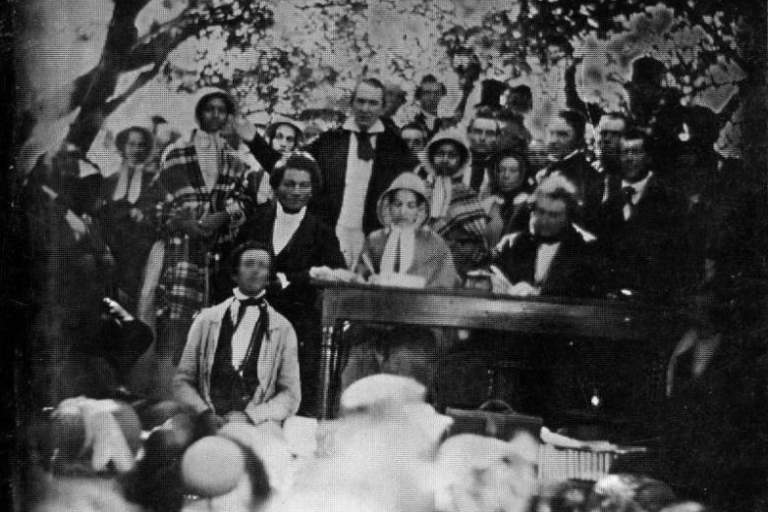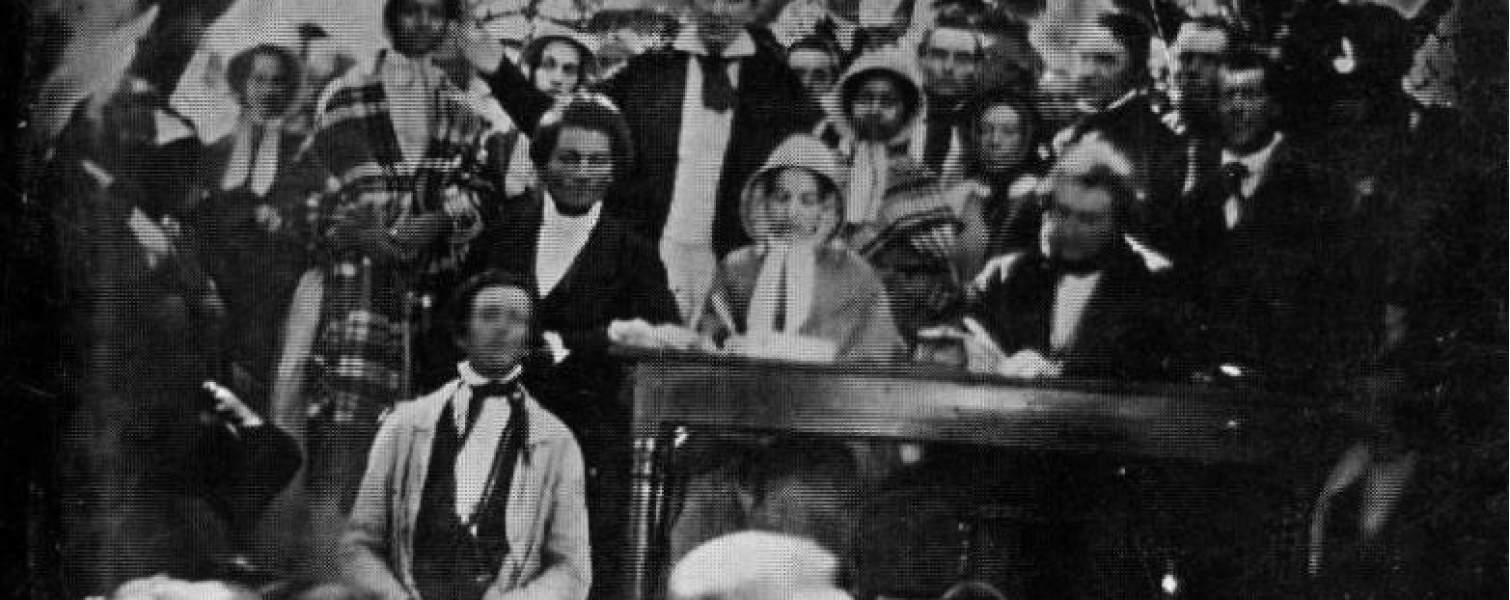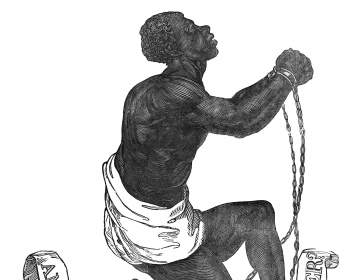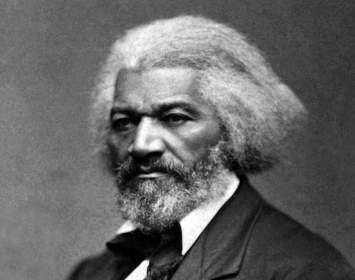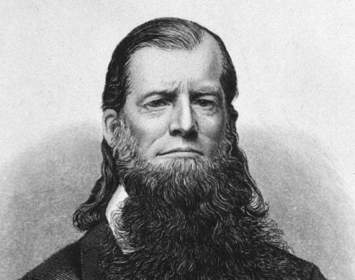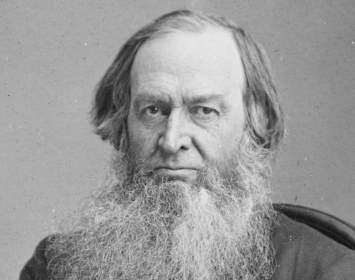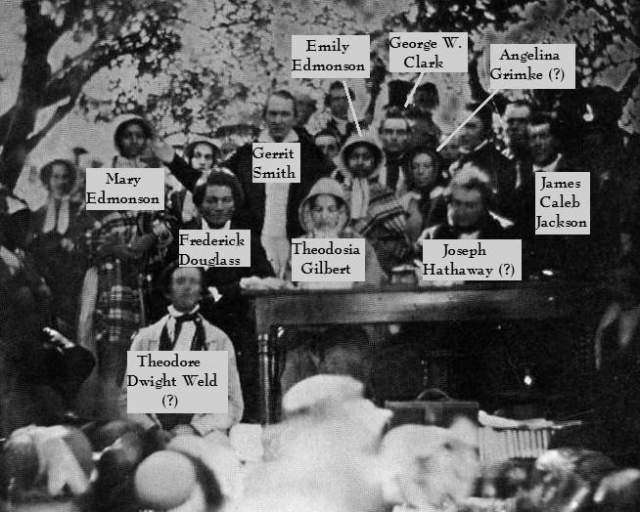In 1850 the U.S. Congress considered the controversial Fugitive Slave Law, which empowered the federal government to capture escaped slaves even in free states and obliged free-state residents to cooperate with apprehension efforts. (The measure passed on September 18, as part of the Compromise of 1850.) Outraged northern abolitionists held numerous protest conventions in anticipation of the law. The August 21–22 convention in Cazenovia is remarkable because of its high turnout relative to the size of the community, and because a Daguerrotype of convention leaders became a defining image of the northern abolition movement.
Antislavery activism in west-central New York State would later climax in the Jerry Rescue of October 1, 1851. On that date, a raiding party of abolition activists led by abolitionist leader and philanthropist Gerrit Smith and Underground Railroad leader Jermain Loguen raided a Syracuse police station and freed William “Jerry” Henry, an escaped slave who ultimately fled to Canada. That event would be recalled as a crowning triumph of northern abolition activism. The event is now celebrated by a monument in downtown Syracuse.
The Cazenovia convention was organized by Gerrit Smith in his capacity as president of the New York State Vigilance Committee. Frederick Douglass chaired the proceedings. On August 21, the convention began at the Congregational Free Church on Lincklaen Street. (Earlier, in 1835 and 1836, the Rev. John Ingersoll, father of freethought orator Robert Green Ingersoll and himself an ardent abolitionist, preached at this church. At the time the church was led by the abolitionist preacher Luther Myrick, who, also in 1835, donated a burial plot to the impoverished Rev. Ingersoll when his wife died in Cazenovia.)
The building could not accommodate all desiring to attend, so on August 22, proceedings were moved to an apple orchard owned by Grace Wilson, a member of the Cazenovia Ladies Antislavery Society. Some 2,000 persons attended the convention’s second day—the same number of people as resided in Cazenovia at the time. The crowd was not altogether welcome in the relatively conservative community.
The Convention produced an open letter “To American Slaves from Those Who Have Fled from American Slavery,” advocating immediate abolition of slavery and condoning the use of violence in efforts to escape. It is widely believed that the letter was authored in whole or in part by Smith. Many speakers and newspaper editors, even in the north, attacked the convention and the open letter as overly radical.
Convention participants included Frederick Douglass, Gerrit Smith, James Caleb Jackson, and the Edmonson sisters, former slaves from Washington, D.C. An estimated fifty fugitive slaves attended. During the second day’s proceedings at the apple orchard, pioneer photographer Ezra Greenleaf Weld, brother of the prominent abolitionist Theodore Weld, made a Daguerrotype of convention leaders that continued to be widely circulated even when the convention itself faded into history. Additionally, the image is also renowned as a milestone in early photography; a copy is displayed in the Getty Museum in Los Angeles.
The Building and Site. The Free Church was later replaced on the site by an opera house, now the restored Catherine Cummings Theatre, operated by Cazenovia College. Grace Wilson’s apple orchard is the site of an apartment house; a historical marker placed in 2010 describes the Convention.

Antislavery Convention
Ezra Greenleaf Weld made this historic Daguerrotype on August 22, 1850, when the Cazenovia Fugitive Slave Law Convention met outdoors in an apple orchard. Image courtesy of the Madison County Historical Society.

Annotated Daguerrotype
The Weld Daguerrotype rotated, cropped, and with key individuals identified. Identification of Massachusetts abolitionist Theodore Dwight Weld and his wife, abolitionist-suffragist Angelina Grimke, is tentative.
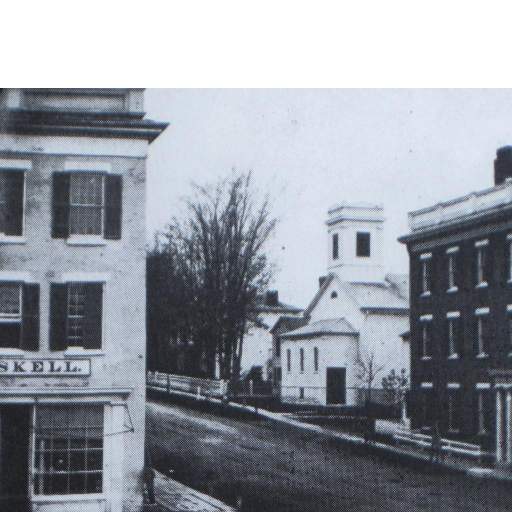
Free Church
Detail of an Ezra Greenleaf Weld Daguerrotype looking up Lincklaen Street depicts the Free Church (white building at center). Founded in 1833, the Free Church split away from a more conservative religious body over issues including woman's rights (nineteenth-century practice was to use the singular, woman's; later practice was to use the plural, women's) and abolition. In this it was similar to the Wesleyan Chapels in Seneca Falls and Penn Yan.
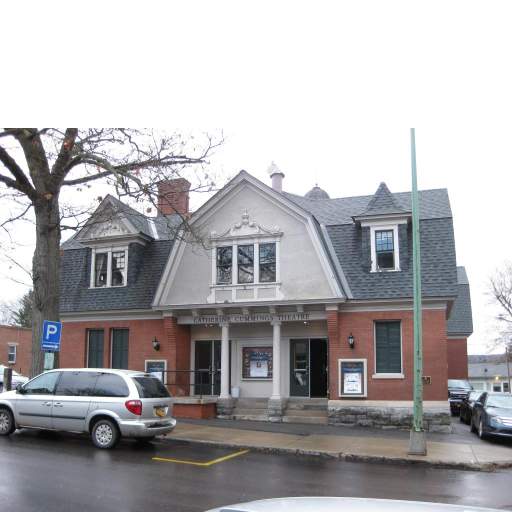
Cummings Theatre
Site of the Free Church (on Lincklaen Street just behind the Lincklaen House) is now occupied by the Catherine Cummings Theatre, operated by Cazenovia College. The theater at 22 Lincklaen St. operates in a restoration of the opera house that replaced the Free Church structure on this site.
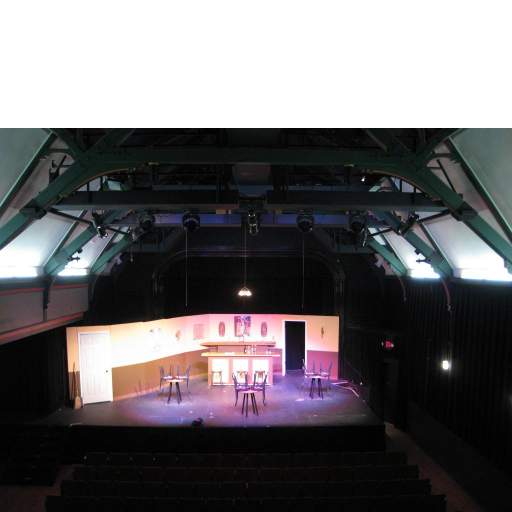
Cummings Interior
Interior of the Catherine Cummings Theatre on the site of the Free Church. Note the restored wooden trusswork of the opera house.
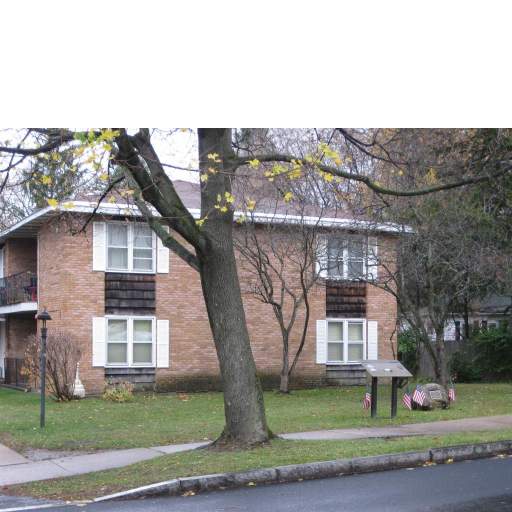
Outdoor venue
This apartment building at 11 Sullivan Street occupies the site of the apple orchard where the second day of the Fugitive Slave Law convention took place. The Ezra Greenleaf Weld Daguerrotype of convention leaders was made on this site. Historical marker and memorial stone can be seen at lower right.
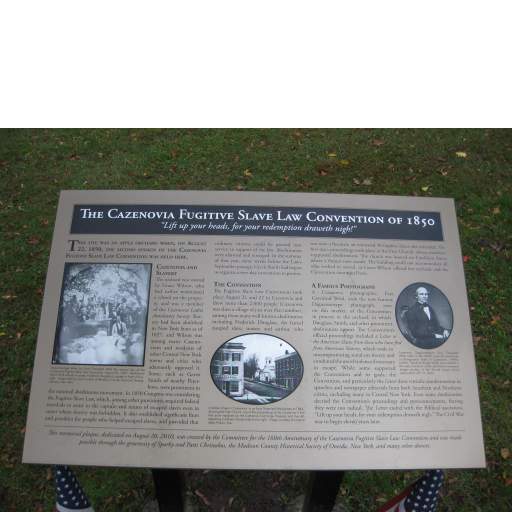
Historical marker
This highly informative historical marker was placed in 2010.

Memorial stone
Memorial stone at the apple orchard site. See next photo for larger image of plaque text.
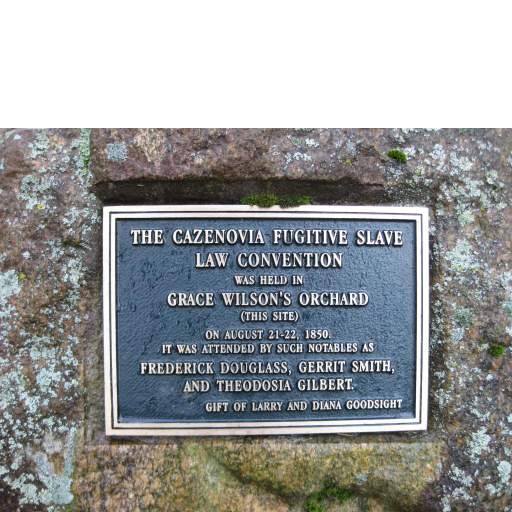
Plaque detail
Close-up of the plaque on the memorial stone. Text fails to note that on August 21, the Convention met at the Free Church, utilizing the apple orchard site only on August 22.
Associated Causes
Associated Historical Events
Fugitive Slave Law Convention at Cazenovia
August 21–22, 1850
